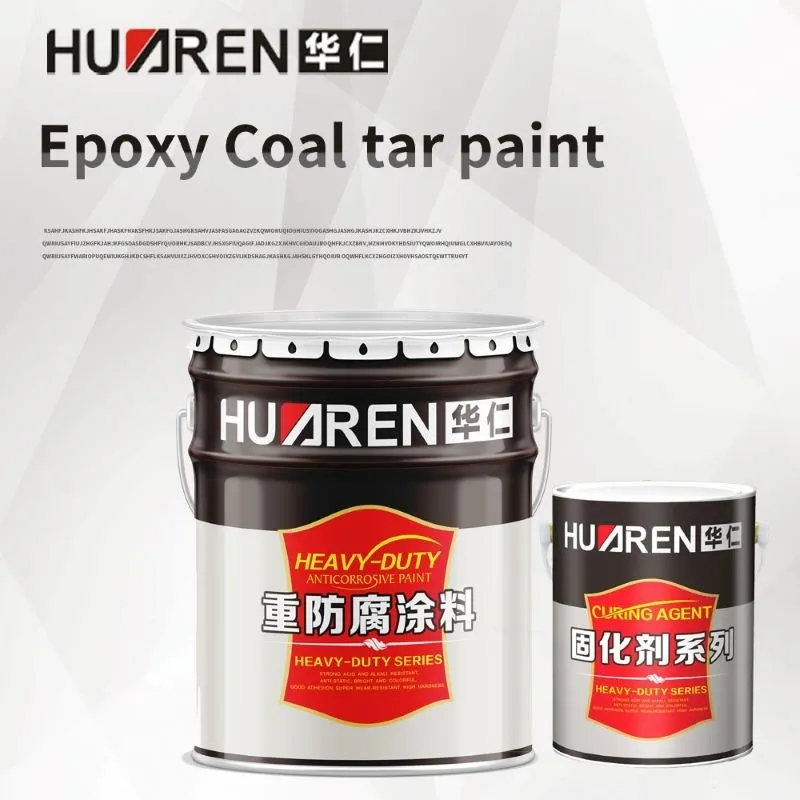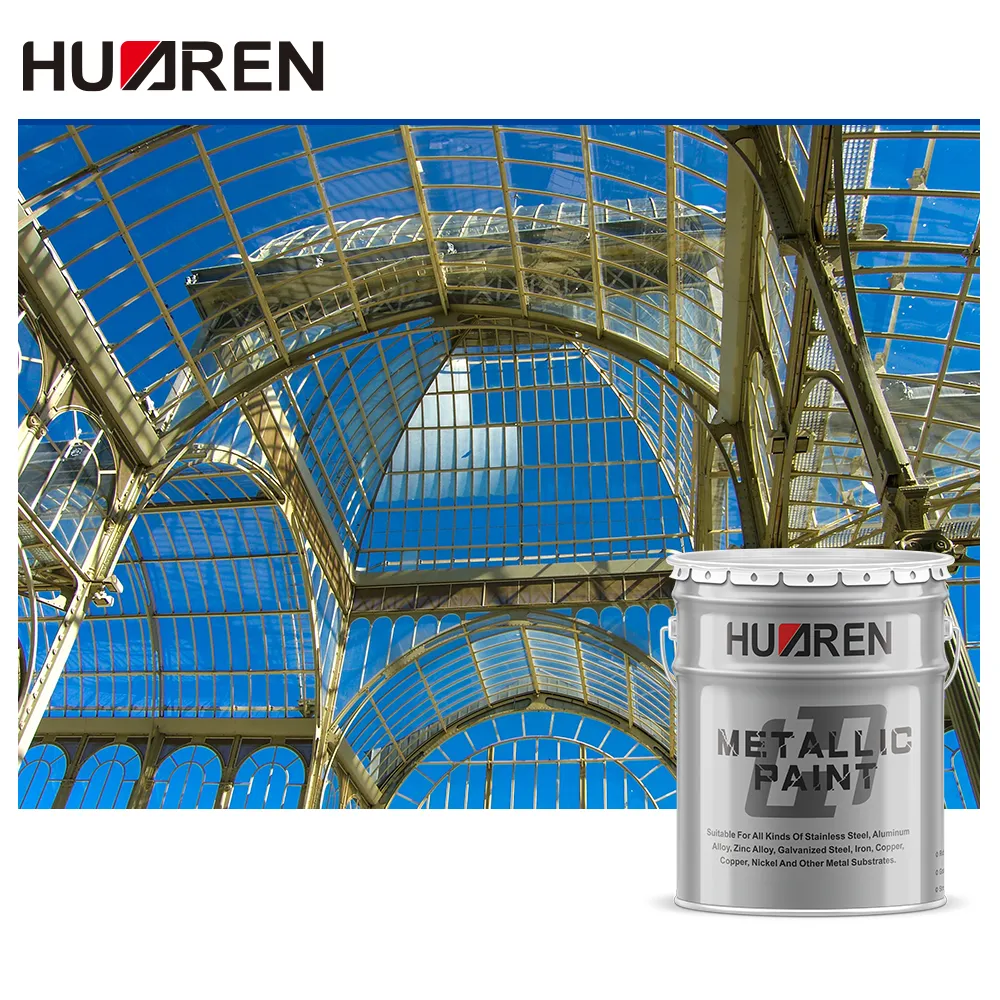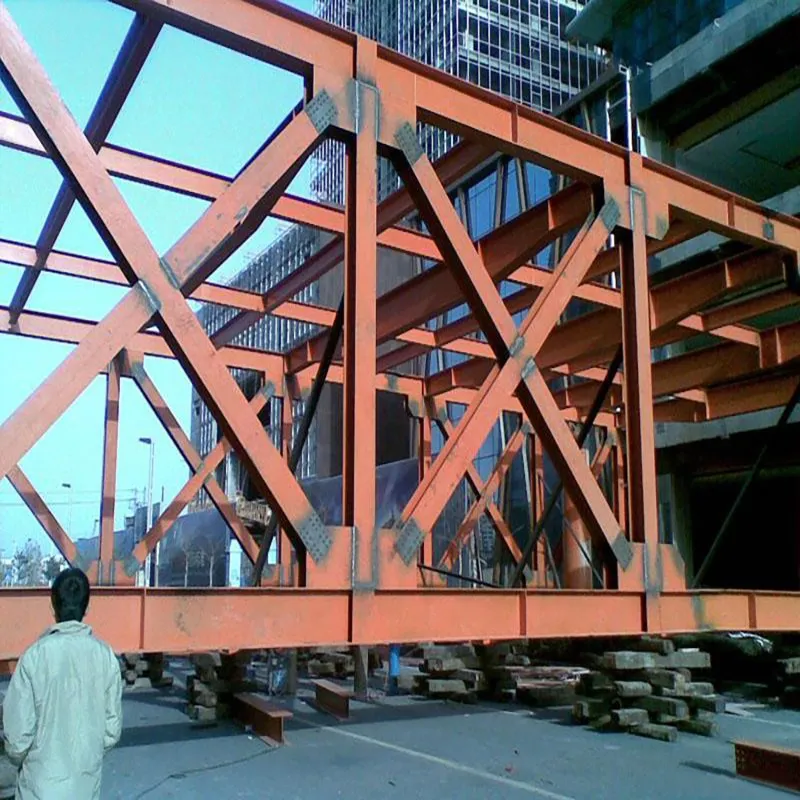In the coatings industry, epoxy coatings are highly regarded for their superior performance and wide range of applications. Epoxy coatings can be divided into epoxy primers and epoxy topcoats, which differ in function, application and effect. In order to properly select and use epoxy coatings, it is essential to understand the difference between epoxy primers and epoxy topcoats.
This article will take a deep dive into the characteristics, uses and roles of both in the coating system to help you better understand the differences between the two coatings.

What is an epoxy primer?
Epoxy primer is a coating specifically designed to enhance the adhesion of the substrate to subsequent coatings. It is typically applied to metal, concrete and other substrate surfaces to provide excellent corrosion protection and good coating adhesion. The main functions of epoxy primers include: enhancing adhesion, providing corrosion protection, improving the durability of the coating system, and sealing the substrate surface.
Enhanced Adhesion
Epoxy primers form a strong bonding layer through chemical reaction or physical adhesion with the substrate. This layer provides a stable foundation for the subsequent epoxy topcoat, ensuring that the coating system will not easily peel or delaminate. Whether it is metal, concrete or wood, epoxy primers can effectively enhance the adhesion of coatings and make the coating adhere more firmly to the substrate.
Provide anti-corrosion protection
Epoxy primers have excellent anti-corrosion properties, especially suitable for metal surfaces exposed to humid or corrosive environments. It can effectively block the penetration of moisture and oxygen, prevent the substrate from oxidizing, and thus extend the service life of the metal. This anti-corrosion property makes epoxy primers widely used in projects such as ships, bridges, pipelines and tanks.
Improve the durability of coating systems
Due to the excellent adhesion and anti-corrosion protection that epoxy primers can provide, they play a vital role in the entire coating system. By forming a strong barrier between the substrate and the topcoat, epoxy primers can significantly improve the overall durability of the coating system and reduce the maintenance frequency and cost of the coating.
Seal the substrate surface
Epoxy primers can also seal the pores on the substrate surface to prevent the penetration of air, moisture and other corrosive substances. This sealing effect not only helps prevent further corrosion of the substrate, but also provides a smoother construction surface for the subsequent epoxy topcoat, thereby improving the smoothness and aesthetics of the topcoat.

What is an epoxy topcoat?
Epoxy topcoat is the final coating of an epoxy coating system, usually used to provide color, gloss and additional protection. Compared with epoxy primers, epoxy topcoats pay more attention to decorative effects and tolerance to external environments. Its main functions include: providing decorative effects, providing anti-UV protection, enhancing chemical resistance and abrasion resistance, and providing an additional protective layer.
Provide decorative effects
Epoxy topcoats can provide a variety of color and gloss options for the substrate surface to meet different aesthetic needs. Whether it is an industrial facility or a home decoration, epoxy topcoats can add a smooth and bright decorative layer to the surface, making the entire coating system not only practical but also beautiful.
Provide anti-UV protection
Epoxy topcoats have a certain degree of ultraviolet (UV) resistance, which can effectively resist aging and discoloration caused by sunlight. This UV resistance makes epoxy topcoats ideal for outdoor or high-light environments, such as building exteriors, bridges, and transportation facilities, ensuring that the coating retains its color and gloss for a long time.
Enhanced Chemical and Abrasion Resistance
In addition to providing an aesthetically pleasing appearance, epoxy topcoats also have excellent chemical and abrasion resistance. They can resist the erosion of various chemicals, greases, acids and alkalis, and are particularly suitable for applications that need to withstand the test of harsh chemical environments, such as chemical plants, laboratories, storage tanks, and garage floors. In addition, the high wear resistance of epoxy topcoats also makes them perform well in heavy-duty environments and can withstand mechanical friction for a long time without being easily damaged.
Provide an additional layer of protection
As the last line of defense in the coating system, epoxy topcoats not only provide aesthetic effects, but also provide additional protection for the substrate. It can further enhance the durability of the coating system and prevent the external environment from eroding the substrate, thereby extending the service life of the substrate.

Epoxy Topcoat Vs. Epoxy Primer: What's the Difference?
Although both epoxy primers and epoxy topcoats belong to the epoxy coating family, they differ significantly in function, application and performance.
Difference in functional positioning
The main function of epoxy primer is to improve the adhesion between the substrate and the subsequent coating, while providing basic anti-corrosion protection. It is the basis of the entire coating system and directly affects the effect of the topcoat and the durability of the coating.
Epoxy topcoat, on the other hand, focuses more on decorative effects and tolerance to the external environment. It provides color, gloss, UV resistance and an additional protective layer to the substrate surface to ensure the beauty and durability of the entire coating system.
Difference in application level
Epoxy primer is usually applied directly to the substrate surface as the first layer of the coating system. It provides a flat and stable foundation for subsequent topcoats and intermediate coatings to ensure the adhesion and anti-corrosion performance of the coating system.
Epoxy topcoat is applied as the last layer on top of the primer or intermediate coating to provide the final decorative effect and additional protection. It can be used as a single topcoat or in combination with other types of coatings to enhance the performance of the overall coating.
Differences in chemical composition and formulation
Although both epoxy primers and epoxy topcoats are based on epoxy resins, their chemical composition and formulations are different. The formulation of epoxy primers focuses more on enhancing adhesion and corrosion protection, so more active ingredients and preservatives are usually added.
The formulation of epoxy topcoats focuses more on the vividness of color, gloss durability, and UV resistance. To achieve these effects, more pigments, light stabilizers, and antioxidants may be added to the topcoat.
Differences in weatherability and durability
Epoxy primers are mainly used to provide initial protection, so their weatherability is usually not as good as epoxy topcoats. Primers are generally not directly exposed to the environment, but rely on topcoats to provide further protection.
Epoxy topcoats are usually directly exposed to the external environment, so they have higher weatherability and can resist the erosion of UV rays, rain, chemicals, and mechanical wear for a long time, maintaining the integrity and beauty of the coating system.
Differences in construction requirements
Epoxy primers have relatively low construction requirements and can usually be carried out under a wider range of environmental conditions, such as high humidity or low temperature. However, due to its high requirements on the surface condition of the substrate, the surface of the substrate must be thoroughly cleaned and treated to ensure good adhesion of the primer.
The construction of epoxy topcoat pays more attention to surface effects and environmental conditions. It is usually required to be constructed at low humidity and suitable temperature to ensure the smoothness and glossiness of the topcoat. During construction, it is also necessary to avoid the influence of pollutants such as dust and impurities to avoid affecting the final effect of the topcoat.

Epoxy topcoat vs. epoxy primer: choice of application scenarios
Epoxy primers and epoxy topcoats each have their own specific scenario choices in actual applications. Understanding their scope of application can help users make better choices in different projects.
Application scenarios of epoxy primers
● Marine engineering: Epoxy primers are widely used in structures such as ships, docks, and offshore platforms that need to be exposed to salt water and humid environments for a long time. Its excellent anti-corrosion properties can effectively protect metal structures from corrosion and extend their service life.
● Industrial equipment: For industrial equipment exposed to chemical environments, such as storage tanks, pipelines, and mechanical equipment, epoxy primers can provide basic protection to prevent chemicals from corroding the substrate.
● Building structures: In building structures, epoxy primers are often used to protect concrete and steel structures, such as bridges, tunnels, foundations, etc., to ensure the stability and durability of the structure.
Application scenarios of epoxy topcoats
● Indoor and outdoor decoration: Epoxy topcoats can be used for interior and exterior wall decoration of buildings, providing a colorful and lasting glossy surface effect, while enhancing the stain resistance and wear resistance of the wall.
● Garage floors: Epoxy topcoats are often used for the coating of garage floors. Their excellent wear resistance and chemical resistance can effectively prevent the floor from mechanical damage and chemical corrosion.
● Industrial flooring: In the field of industrial flooring, epoxy topcoats can provide an additional protective layer for the floor, enhance the impact resistance and wear resistance of the floor, and are suitable for high-load areas such as warehouses, factories, and workshops.

